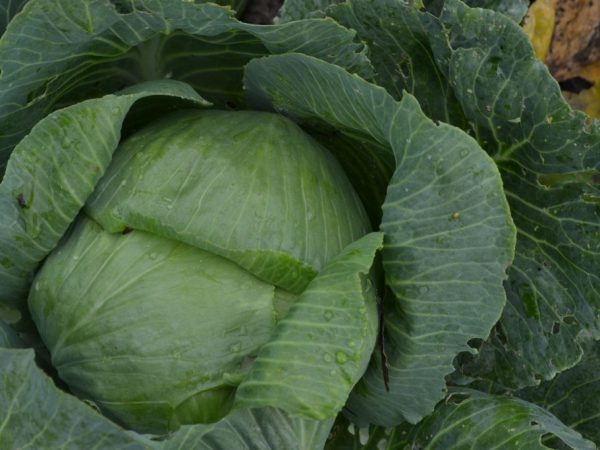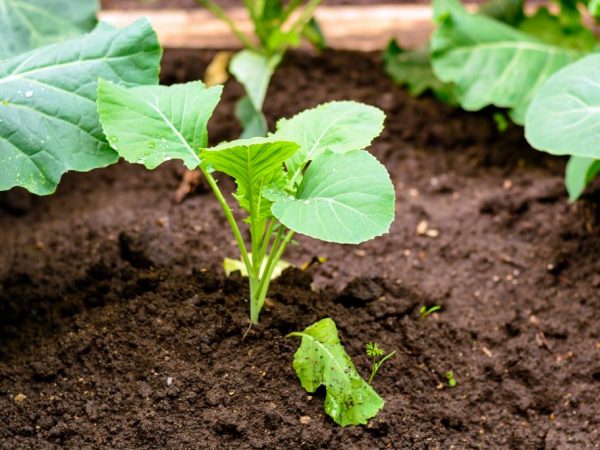Characteristics of the cabbage variety Blocker F1
The Bloktor cabbage has proven itself well. This is a late-ripening variety that does not require special care. It adapts well to the conditions of the region where cultivation takes place, has high yields.

Characteristics of the cabbage variety Blocker F1
Variety characteristic
White cabbage F1 Blocker is a hybrid of European selection.
Among the species of late ripening, this one is one of the earliest. It has a short growing season: from the appearance of the first shoots to the stage of technical ripeness, it takes from 125 to 130 days.
The culture is unpretentious in care, it is resistant to stress, drought and frost. It is planted with a density of 30-40 thousand plants per hectare; it is also suitable for mechanized harvesting. The yield is good and stable under any conditions - 5-6 kg of fruits per 1 sq. m.
Description of the head of cabbage
The head of cabbage is dense, compact. Its weight is 2-2.5 kg. Some specimens reach 3 kg.
Heads of cabbage are characterized by alignment. Possible pneumatic cleaning. The shape is round, correct. The color is light green. The leaf apparatus is powerful. The taste is excellent: the cabbage is juicy and sweet, it contains many useful substances. Organoleptic characteristics are high.
The preservation of fruits is long-term - from 7 to 12 months, since the variety does not rot and does not lose its presentation during storage. It tolerates transportation over long distances well, so you can cultivate the Bloktor F1 variety with the aim of selling it on the market. It is used fresh or processed: salads are prepared, salted.
Care
If white cabbage is grown in seedlings, in order to achieve high yields, appropriate conditions are provided first for seedlings, and then for adult plants.
Lighting
The seeds of the culture are planted for seedlings in April. At this time, the daylight hours are still small. The boctor requires good diffused light, so it is supplemented with phytolamps or fluorescent lamps. Somewhere in 10 days after germination, a pick of sprouts is carried out. This treatment helps to increase the light and also strengthens the root system of the seedlings. To transplant them to a permanent place, an unshaded area is chosen.
Temperature
The seedlings will not stretch very much if, after the sprouts appear, the temperature is maintained at 6-7 ° C.
A week later, it is increased to 15 ° C during the day and 12 ° C at night. In the room where the seedlings are grown, frequent airing is done. They are hardened 7-10 days before disembarkation. For this purpose, window frames are removed or plantings are taken out on the street every day for 1-2 hours. After planting, the plants adapt well to environmental conditions - they tolerate low and high temperatures. But the optimal indicators for development are 15-18 ° С.
Watering
The seeds are planted in well-moistened soil. Seedlings are watered as needed, when its top layer dries up. Water is applied in moderation, since seedlings do not tolerate excess moisture.
Adult plants need abundant and frequent watering.The more moisture the cabbage receives, the faster the vegetative mass builds up. For this, only warm water is used. It is recommended to moisturize in the evening to prevent rapid evaporation. Especially watch out for soil moisture when heads are formed. Somewhere a month before harvesting, watering is limited, 14 days before they stop completely. The retention of moisture in the soil can be provided by mulching with humus or peat.
Loosening and hilling

Cabbage must be loosened
After watering and rain, it is necessary to loosen the soil: then a dry crust will not form on the surface, limiting the access of oxygen to the roots.
The hilling of plants also contributes to this process. The earthen pile should be 0.5 m in diameter. Then the roots form lateral shoots, due to which the cabbage receives more nutrition. This affects the growing result. Strongly developed leaves help to fight weeds, which suppress them.
Top dressing
The variety is undemanding to the nitrogen content in the soil, but in order to improve the yield indicators, it is necessary to apply fertilizers with their content while pouring the head of cabbage.
Late varieties consume a lot of nutrients over the summer, so the plants are fed 4-5 times per season. The blocker especially needs potash and phosphorus fertilizers, which are used after the formation of heads of cabbage. For this purpose, apply:
- organic matter: mullein infusion (ratio 1:10), wood ash (1 tbsp. per 1 sq. m.), fermented weeds;
- minerals: potassium chloride, nitrophosphate, liquid complex fertilizers.
Diseases and pests
The F1 blocker is immune to fusarium and thrips.
Pests that infect the culture:
- cabbage fly, cabbage scoop and whiteworm; for prevention, the soil around the roots is sprinkled with naphthalene and sand, a solution of dust is used to combat;
- cruciferous fleas; for the fight do dusting with ground pepper, tobacco dust;
- aphid; to combat prepare a decoction of tobacco dust, apply "Fitoverm".
Among the diseases that cabbage is exposed to, one can distinguish:
- kilu - the soil is treated with Bordeaux liquid or formalin, the affected leaves are burned;
- fusarium - take the same measures as in case of a keel injury;
- black leg - for cabbage, you cannot use drugs that fight the disease, therefore, the affected vegetables are dug up, and the rest are watered less;
- white rot - carry out prevention, which includes the introduction of fertilizing and compliance with crop rotation;
- gray rot - to save the harvest, the room where the fruits will be stored is treated with bleach or formalin.
Conclusion
Many gardeners choose Bloktor F1 for growing, since the variety has a lot of advantages. The vegetable is universal in consumption, has a long shelf life.
Good care and prevention of diseases save you from losing crops, which are quite high. The hybrid is suitable for growing in different regions.


